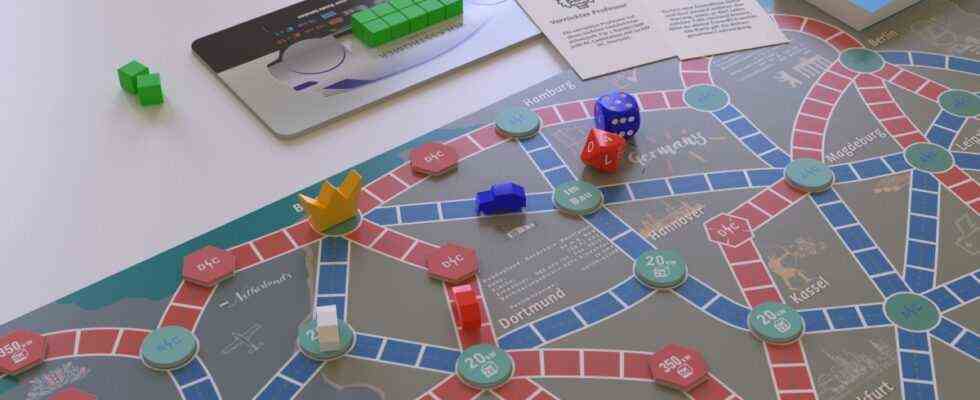Electromobility is pretty complicated. Which cars are best for long journeys? How does the weather affect the battery? And what better way to get there: with a sprint on the autobahn or battery-saving on the country road? It is questions like these that “electricity novices” inevitably grapple with when they switch from the internal combustion engine to the electric drive.
“Of course you can pray all these things over and over again,” says Tobias Wagner, a 27-year-old from Munich who has been driving electric himself for several years. But actually, he thinks, one should be able to explain electromobility in a playful way – in such a way that the dependencies between charging power, battery capacity and range not only cause headaches, but are even fun in the end. His solution: a board game in which everything revolves around e-cars and the combination of the factors mentioned decides whether to win or lose.
Full-time, Wagner heads a start-up that develops multiple sockets for electric cars. But even in his free time, the whirring speedsters apparently can’t get out of his head. That is why he invented “E wins”, a board game in which the characters are modeled on real electric cars. Some have a large battery, others a small one. Some load quickly, others leisurely or sometimes not at all. And one even has solar cells on the roof so that you can top up your batteries on the go. “The best advertisement for e-cars would of course be if you throw the dice and land at your destination,” says Wagner with a grin. But of course it’s not that easy. Special event cards always cause surprises with “E wins” – just like in reality.
It can happen that you have to stop because the charging cable is too short or an inattentive driver with a combustion engine has parked his car in front of a charging station. Or it goes faster because the Stromer drives in the slipstream of a truck. Traffic policy tips should not be missing either: an event card instructs the players to only drive on the motorway before the evil “DJ Andi” introduces the toll there. During the game you play with small five-kilowatt cubes in order to imitate the decreasing or increasing battery status of the Stromer. Depending on the playing field, charging can be carried out with slow alternating current or fast direct current.
Game inventors and electromobile enthusiasts: Michael Renninger (left) and Tobias Wagner.
(Photo: Games4Future)
Thanks to such details, it is noticeable that Tobias Wagner and his business partner Michael Renninger have given a lot of thought to a very topical issue. Nevertheless, initially no manufacturer was seriously interested in the idea. “There were talks with some companies,” says Wagner, “but they tended to discourage us. Some promised us to wait a year before the game came onto the market.” Finally, they launched the project themselves, created the prototype using a 3D printer, and raised 27,000 euros through crowdfunding. “That was enough for a first edition of 500 copies,” says Wagner. Now the second edition is coming onto the market. So far, you can only buy the game online.
Although “E wins” started as an enthusiast project, according to the developers it is already showing its first commercial success. “We are already just in the black,” says Wagner, who is not yet finished with his ideas. In the future, players should be able to buy additional cards. “Of course, people prefer to play with their own electric cars,” says the inventor. “We would like to comply with this request.” It is also a lucrative source of income: the board game itself costs almost 50 euros; additional playing cards will cost five euros in the future. This is also an involuntary parallel to real electric cars: they are not cheap.
Another drawback: “E wins” is still relatively complicated. According to the information on the packaging, it should be playable for eight-year-olds, but in most cases that is wishful thinking. Even adults often have difficulties on their first rounds, as the developers have learned from various feedbacks. “Our customers are still primarily e-car drivers,” admits Tobias Wagner. “We want to move out of this niche and soon also increasingly address those who are not yet driving electrically.”
How is that supposed to work? “By making the game much more positive,” says Wagner. In the real world, too, the number of charging stations is increasing steadily. In addition, the vehicles are now much more reliable than they were a few years ago. For this reason, there should be a simplified game scenario in the future: If you want, you can pretend you’re already in the year 2025 – everything works better, the batteries charge faster and fewer unforeseen events happen on the way.
But doesn’t it get boring? “No,” assures the game inventor. After all, you can easily increase the level of difficulty again and make the journey more complicated – by choosing the present-day scenario.

